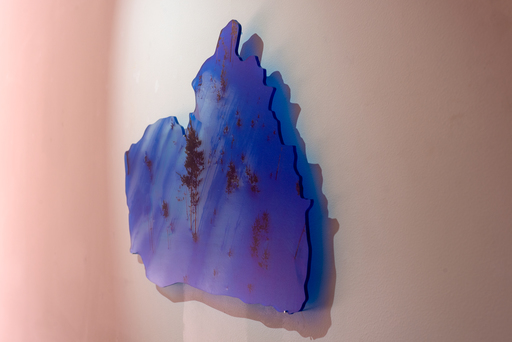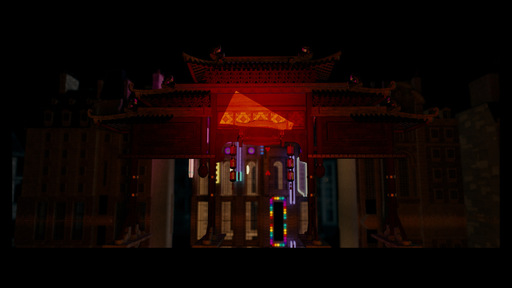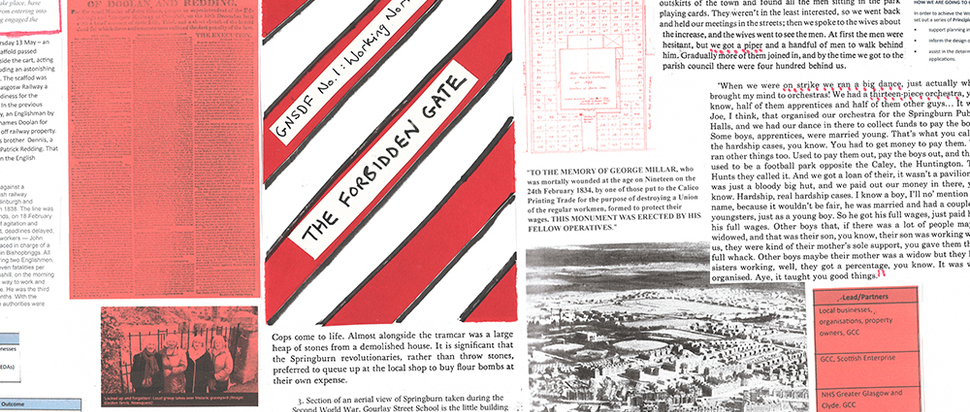Glasgow International 2024: Stories from the city
Returning after a three-year hiatus, this year’s Glasgow International is embedded in the city’s communities and distinct history, while also embracing voices and ideas from outside the city
This year, Glasgow International, Scotland’s biennial festival of contemporary art, celebrates its 10th edition after a three-year hiatus. Running from 7 to 23 June, this year's festival presents a diverse set of projects across the city, in museums, galleries, libraries, artist-run spaces and other venues. The main programme comprises exhibitions and collective and community projects, along with a series of performances, screenings, talks, panels, sharings, radio broadcasts, and workshops activating different spaces, which form the Gatherings programme. A total of 43 projects will be showcased, spanning various mediums and presented by both local and international artists, including emerging and established names.
Speaking with some of the younger artists from diverse diasporic communities living and working in Glasgow (many of whom are being platformed for the first time during the festival), reveals diverse but interconnected narratives that have influenced their projects. The Skinny spoke to five of these artists, outlining their approaches to this year’s festival through mediums such as film, photography and engagement with archival materials.
At Street Level Photoworks, Lithuanian-Scottish artist Kotryna Ula Kiliulyte presents Arctic Swell – a simple melody. The exhibition emerged from a residency in Finland in early 2020 that was cut short by the pandemic and centres on the idea of solastalgia – the anxiety induced by environmental changes and degradation. Across two rooms, the exhibition features a four-part video work alongside light boxes and photographs. The visuals combine drone footage of snowy Finnish forest landscapes coupled with Kiliulyte’s experiences of pregnancy and motherhood during the pandemic. Drawing from Lithuanian and Scottish folk histories, one of the films includes a Scottish lullaby as its primary soundtrack, which speaks to a mother’s anxiety about losing her baby while foraging in the forest. The photographs are created through an interesting process of manipulation using photogrammetry software and printed on organically shaped glass surfaces to enhance their sculptural qualities against the wall. These photographs are showcased in a room tinted pink by a filter on the gallery’s glass windows, symbolising the light passing through skin and what an unborn baby might see from within the mother’s womb.

Kotryna Ula Kiliulyte, Arctic Swell, 2023. Courtesy of the artist and Vilnius Prospekto.
Wei Zhang, a queer Chinese artist, is presenting their independently produced film Wah Yen, named after Glasgow’s first Chinese restaurant which opened in the 1940s and eventually closed in the 1990s. Presented at 5 Florence Street, the project takes inspiration from archival film footage that Zhang accidentally discovered on eBay, which follows a family touring Scotland in the 1970s, a time coinciding with Glasgow’s Shipbuilders Dispute. Drawing on these parallel histories and Zhang’s personal experiences of navigating their queer identity within an Asian household – particularly the challenges of balancing familial expectations and personal desires – the film weaves a poetic narrative. The story further follows two lovers: a queer neurodivergent migrant from Hong Kong and a queer local shipbuilder, who decide to remain living together in Glasgow against the wishes of their families. The characters’ vivid, imaginative costumes reflect their internal turmoil, as their bodies metaphorically transform and decay. Given the parallel narratives, the half-hour film evokes the overcoming of adversity and the fight for a better future. Presented as a single-screen projection, the film is accompanied by a small TV playing archival films about the 70s Shipyard Dispute from STV and the National Library of Scotland.
Mina Heydari-Waite, a British-Iranian filmmaker, also engages with archival film in her presentation for the festival. Her film Farang delves into a personal family archive of 30-hour long Hi8 tapes, interweaving family history with broader sociopolitical contexts. Presented in collaboration with Offline Glasgow, the film takes us through family histories from the 1990s when her mother, pregnant with her, made two high-risk trips to Iran after years of separation from her family. During these trips, her mother documented everything around her on film, from family reunions to local scenery and even hours of Iranian television, driven by the fear that one day everything so personal to her would cease to exist. In her exploration of this history, Heydari-Waite discovered that the route that her parents travelled was the same route established by the British in Iran to set up the Indo-European telegraph line, facilitating communication between the Indian colony and the British Empire after the 1857 Indian Mutiny. The film is central to the exhibition, which also includes photographs and sculptural pieces, such as a fountain; each physical component references historical and personal moments from the film and reflects on themes of agency, communication and the transmission of messages within systems of power. Heydari-Waite has been involved in community-engagement projects such as film screenings and workshops in Govanhill, in the Southside of Glasgow, embedding this exhibition within a larger context beyond the festival itself.
Likewise, Joey Simons explores community engagement in his project Beyond the Forbidden Gate, making the festival a platform for some of his ongoing research into working-class communities in north Glasgow. Simons’ research explores various histories and struggles, including public housing and land ownership issues, addiction and rehabilitation, incarceration and prison recovery, all of which feed into the multilayered project. Developed in collaboration with Glasgow Sculpture Studios and supported by SISCO and Glasgow Open Museums, the project will be presented across four libraries (the Mitchell, Possilpark, Woodside and Springburn) and showcase a range of archival and research material, publications, projects and zines created by children and adults during community workshops, alongside community-contributed objects and history boxes from the library’s collections. With the Mitchell Library acting as the main hub, it will host a series of talks, workshops and screenings; Possilpark Library will witness a book launch by the sculptor Martin McCreadie; Woodside Library will feature zines and work created by young children; and Springburn Library will showcase two sculptures by Jimmy Boyle, who is considered to be one of Scotland’s most notorious gangsters who, through his association with the Barlinnie Special Unit, became a sculptor and writer upon his release in 1981.

Wei Zhang, Wah Yen, 2024. Courtesy of the artist.
Speaking of archives, Glasgow School of Art Exhibitions, in collaboration with Craigmillar Now (a community-led arts and heritage organisation based in Edinburgh), is presenting an exhibition dedicated to Sandra George (1957-2013), a British-Jamaican photographer. George had an extensive photographic practice documenting the Craigmillar community from the 1980s to the 2000s. Her significant body of work, never exhibited during her lifetime, includes photographs of her community, portraits and self-portraits, offering a reflective and deeply personal perspective on her surroundings. Curated by GSA Exhibitions Director Jenny Brownrigg, the exhibition will showcase black-and-white photographs alongside other forms of George’s artistic practice, highlighting her significant but underrepresented contributions as a woman of colour in Scotland. The exhibition will further host an hour-long panel discussion on 13 June at 6pm, led by Glasgow-based artist and performer Christian Noelle Charles, with guests Zoe Lorimer (artist and writer) and Titilayo Farukuoye (writer and activist). The discussion will honour George’s legacy, focusing on her body of work and its relevance to current community dynamics and the institutional challenges Black women and women of colour still face in the creative sector. Additionally, it will explore different perspectives on Black identity, representation and community engagement in Scotland.
Glasgow, with its long colonial and contemporary history as a port town with global trade connections, has inspired much-needed dialogues in the creative sector around diasporas, community, race, identity, resources and land use. This further supports the organisation of artistic communities and sustains collaborations, highlighting Glasgow’s unique approach to experimental and grassroots initiatives in the arts. This collective effort to activate the city through community engagement has been key in developing 2024’s iteration of Glasgow International. The festival’s support has made possible various community-led projects, emphasising making, sharing, sustaining, and exchanging ideas on both a local and global scale.
Glasgow International Festival of Contemporary Art, venues across the city, 7-23 Jun
